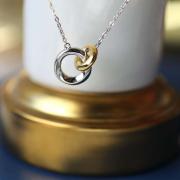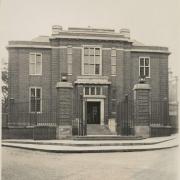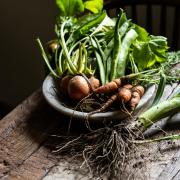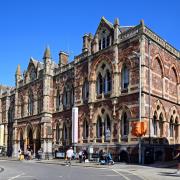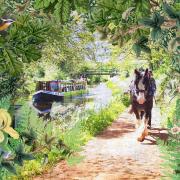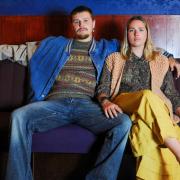Stretched out upon a towel on a South Devon beach enjoying the sunshine and the coastal vibe, it’s difficult to imagine that there is anything but sand and seaweed where the tide ebbs and flows along the shoreline. It’s easy to see square miles of Devon’s finest grassland meadows inland, less so the similar meadows that exist under the ocean.
At least they did. But they, largely, don’t anymore. Yet seagrass meadows are as important to the planet’s ecosystem as Amazonian rainforests are. Little wonder, then, that the Ocean Conservation Trust, based in Devon, is carrying out internationally significant work to restore them. I spoke with Mark Parry, who leads the Blue Meadows seagrass protection and restoration project at the trust.

So what are seagrass meadows?
Visualise the Devon countryside – luscious green pastures, pockets of woodland, a gentle rolling landscape. Within the first few miles of seascape off the British coastline, that’s how it looks – or should look – underwater, too – a rolling landscape of seagrass meadows, kelp forest and natural reefs. In place of cattle and ponies grazing inland meadows, exchange for seahorses among the blue meadows.
Seagrasses grow from northern Scandinavia to south of Australia. The biodiversity of seagrass meadows is extraordinary; a single hectare of seagrass provides sanctuary for up to 80,000 animals. They are home for rare and endangered species, such as seahorses.
But the importance of seagrass meadows doesn’t stop with species habitat. Healthy seagrass meadows can prevent the erosion of coasts and keep the shoreline in better condition by anchoring sediments on the seabed.

They also act as a phenomenal carbon store, outperforming other plants and absorbing carbon up to 35 times more efficiently than tropical rainforests. Despite covering only 0.2 per cent of the seabed, seagrass meadows currently store 10 per cent of the ocean’s carbon.
At least half of the global seagrass meadows, especially along British coasts, have been lost. ‘We can say confidently that 50 per cent of seagrass meadows have been lost. It could be more,’ says Mark. ‘There are multiple reasons for this loss including poor water quality, unsustainable boating activity in certain areas, and land pressures such as development creating toxic run-off.’
There are two types of seagrasses along British coasts. One lives inter-tidally and the other sub-tidally. It is the sub-tidal seagrass that the Ocean Conservation Trust is particularly interested in. This is the seagrass that is close to the coastline, in quiet bays and estuaries.

‘A decade ago, no one was interested in talking about seagrass meadows,’ says Mark. ‘The narrative was about single species of rare creatures, like seahorses. But there has been a shift where the habitat has come to the fore; if the habitats, like seagrass meadows, aren’t there, those individual species can’t survive. It’s important to look at the bigger picture. Hence, the Blue Meadows Project.
‘One of the trust’s pillars of its work is habitat restoration. The simple fact is, we need to maintain the few remaining patches of seagrass meadows that there are around the British coastline, and restore the lost habitat, too. Blue Meadows is our most ambitious project to date.’
In the UK there is a network of Marine Protected Areas, or Marine Conservation Zones (MCZ), which are designated by Natural England. Each zone will have several features that deem it of importance for conservation, such as sea caves or seagrasses. In South Devon that includes Plymouth Sound, which has been designated as the UK’s first National Marine Park, and Torbay MCZ.
Mark says: ‘When the Torbay Marine Conservation Zone was designated in November 2013 following a condition assessment, it was categorised as being in unfavourable condition; that is the zone’s health is degrading. Therefore, it’s this area together with Plymouth Sound that we are focusing our efforts on during the nursery phase of the project. We’re working with the Wild Planet Trust (the organisation behind popular Paignton Zoo) and local fishing and boating communities in Torbay to help raise awareness of the need for seagrass restoration.

Mark says: ‘We’ve approached this project from a horticultural angle. Stage One was to set up a purpose-built aquaculture facility for seagrass restoration that has salt water for irrigation. This sort of facility is usually sited off the west coast of Scotland because of the pristine water quality there, but we have managed to construct our facility on the River Dart at Torbay.
‘It’s the largest seagrass nursery in the UK. But we do have to constantly test the water quality because the mouth of the Dart is known to be the worst location in the UK for combined sewage overflows. It’s not something for Devon to be proud of and is one of the reasons why the Torbay MCZ is deemed to be in unfavourable condition.’
Stage Two is to harvest the seed from existing plants in late summer. ‘Seagrasses are not seaweeds,’ says Mark. ‘They are true plants that have adapted to live submerged under saline water. We must pick the time to harvest the seed carefully; there’s only a fortnight window when the seed is mature enough to be viable. A normal leaf of the seagrass plant is strap-like, about 30cm long. Its reproductive element is branched with seedpods. When they mature, they’re upright and buoyant but by the end of August, they fall over and it’s too late to harvest.’
The seeds are then cleaned and must be exposed to cold during the winter. They are kept at circa 4˚C and in high saline conditions, which stops them from germinating until March when the day length and water temperature increases. Then, the seeds are brought out and planted into sand on 100 per cent biodegradable mats.

The seedlings must become established before planting into the seabed – equivalent to hardening off tender seedlings that have been grown in a greenhouse. Once developed the seagrasses are a perennial plant that can reproduce in two ways: by flowering and seeding, and by sending out rhizomes like a strawberry plant.
Mark says: ‘We do not try to turf an area; that is unviable when we have so large a landscape to restore. Each biodegradable mat is 50cm2 and we use approximately 600 per hectare. We try to establish small islands, in a honeycomb grid, because that is the most efficient use of space. Eventually, the plants will fill the gaps of their own accord.
‘In total, we’ve planted four hectares between the Plymouth and Torbay sites. These are, essentially, test-bed sites that we can monitor and research. There’s no manual to planting seagrasses! Ultimately, we’ll get to a point where we can upscale to a whole landscape. To do that, we need to work out a way to mechanise. Currently, everything must be done manually with qualified underwater scientific divers. But we can’t restore the lost 50 per cent of blue meadows around the world’s oceans in that way!’

A Blue Meadows community engagement manager has been appointed to the Ocean Conservation Trust. They are working with the public with various engagement activities planned, creating opportunities to allow volunteers to help with the horticultural side of the project, and encouraging sponsorship for the restoration of the seascapes. So far, the trust has attracted big-name sponsors like Scottish Power, DFDS and, locally, Plymouth Gin. Events with the Wild Planet Trust are also proving popular. ‘But we’re always looking for more!’ says Mark. ‘This is a long-term investment at the trust, over the next 50 years.’
One activity that the trust has put in place, literally, is the positioning of buoys that identify areas of seagrass meadows.
‘These buoys are placed at the seaward edge of the seagrass meadows,’ says Mark. ‘It indicates to water users, like me as a keen surfer, where the meadows are. If boat owners can anchor seaward of the area, for example, it avoids the risk of damaging the sensitive habitat and the detrimental impact that dragging an anchor through the meadow has on seagrasses.’

What’s next for this ambitious project?
Mark says: ‘We’re talking to the Crown Estate (which owns the seabed in British waters) about increasing our restoration sites and expanding our efforts. And we look forward to building relationships with sponsors for the long-term funding of the project and for the public to get involved through volunteering. The oceans are unique and seagrass meadows are a vital part of the world’s ecosystem. After all, everyone loves to be beside the seaside!’




